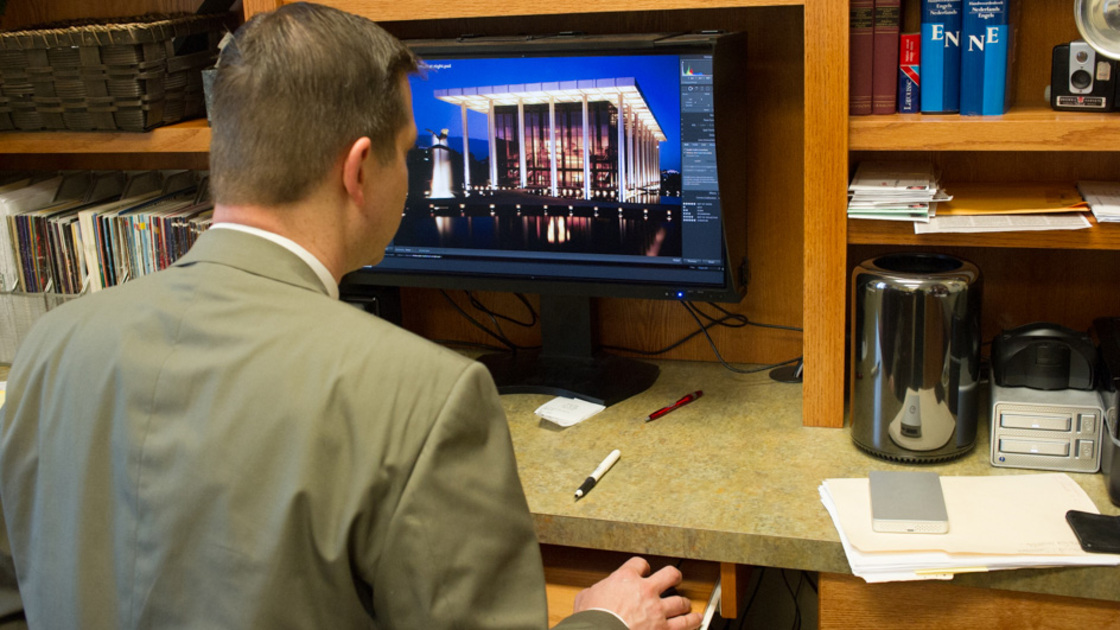EDMOND—You receive the latest issue of the Trumpet. You flip over to the table of contents. A headline grabs your attention and you turn to it, but you find a different article in its place. You glance at the photograph; it’s pixelated and missing a photo credit. You flip through the pages and find the article you were searching for, but notice a thin white line along the top of the illustration. You settle in to read the article only to be distracted by its fuzzy text. Any of these things could happen to you without the publishing staff’s prepress work on the Trumpet.
Twenty-three staff members have poured in hundreds of combined hours over more than three weeks to produce the latest Trumpet. Articles have been written and fact-checked, photos and illustrations have been acquired, and design has been laid out. But for the prepress crew, the work is just beginning.
Prepress is a series of checks to make sure that the magazine will look right in print. Publishing manager Wik Heerma checks the completed design file before each issue on the day it goes to print. He examines the photo credits to make sure they are accurate and are not so close to the inside margin that they could be trimmed off. He measures photo resolution, since photos need to be about four times more detailed in print than on screen. He ensures that any design element at the edge of the page “bleed” (extend beyond the printed area) by at least 1/8th of an inch to account for deviations when the trimming machine makes its cut. He corrects overset text, where the end of an article doesn’t fit on the page, by reducing the space between letters or words by almost microscopic amounts. He changes any text colored with rich black, which is a combination of colored inks, to pure black ink. Rich black can make the text fuzzy when the colors don’t align perfectly in printing. He verifies that the table of contents has accurate titles and page references.
When Mr. Heerma has finished checking the Trumpet’s design file, he exports it to a postscript format and matches it to the specifications of Freeport Press, which prints the Trumpet. He uploads a pdf through a Kodak Prepress Portal System, where he and prepress assistant Deepika Azariah can view it online along with Freeport’s prepress representative.
Freeport then runs its own series of checks on the pdf using software that flags potential printing problems. Once the printer has finished its checks, Azariah approves the pages one by one on the Prepress Portal System. If she finds any errors, she contacts Mr. Heerma, who will re-upload a corrected page. When every page has been approved, the printing process begins.
If errors are not caught early on, Mr. Heerma said there is a cost involved in fixing it or it may be too late.
“You want to get it right as early on in the process as you can,” he said.
The process has changed considerably, Mr. Heerma said, since he began doing prepress for the Church in 1994.
“When I first started out, we were literally sending sheets of film—like acetate—to the printers,” he said.
Producing a layout mockup used to involve cropping with knives and scissors, performing literal “cut and paste” and developing photographs. The same principles in prepress still apply, Mr. Heerma said, but the technology is radically different.
The entire process is now done electronically, which saves time and labor and makes it far easier to correct errors even late in the process.
“We’re living in a time of such a rapid technological development,” Mr. Heerma said. “It makes doing the Work possible through a much smaller number of people.”
He added that the technology enables Publishing to easily make changes, even late in the process, which reduces the chance of errors creeping into the final printed product.
Taken together, the myriad details involved in the Trumpet’s prepress work have a significant effect on both the legibility and the quality of the finished magazine.
